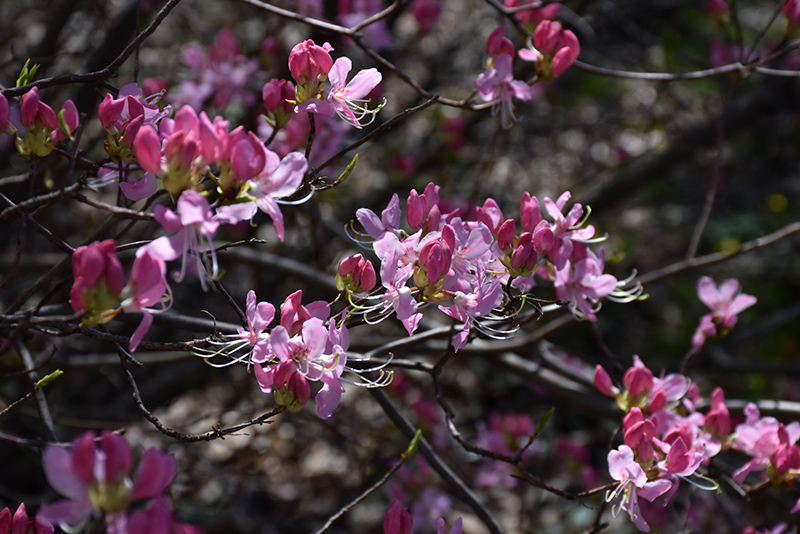|
|
|
| home | about us | loyalty program | products | directions | warranty | garden splendor ® | plant collector | landscaping | |
| Plant Finder | |
|
* This is a "special order" plant - contact store for details Height: 15 feet Spread: 10 feet
Sunlight:
Hardiness Zone: 5a Other Names: Pink-Shell Azalea Description: An impressive deciduous azalea, featuring bright, elegant pink to white flowers in spring, before the leaves; bushy, upright habit of growth; absolutely must have well-drained, highly acidic and organic soil, use plenty of peat moss when planting Ornamental Features Pinkshell Azalea is bathed in stunning clusters of lightly-scented shell pink trumpet-shaped flowers with white overtones at the ends of the branches in mid spring, which emerge from distinctive rose flower buds before the leaves. It has green deciduous foliage which emerges light green in spring. The narrow leaves turn outstanding shades of orange and red in the fall. Landscape Attributes Pinkshell Azalea is an open multi-stemmed deciduous shrub with an upright spreading habit of growth. Its relatively coarse texture can be used to stand it apart from other landscape plants with finer foliage. This is a relatively low maintenance shrub, and should only be pruned after flowering to avoid removing any of the current season's flowers. It has no significant negative characteristics. Pinkshell Azalea is recommended for the following landscape applications;
Planting & Growing Pinkshell Azalea will grow to be about 15 feet tall at maturity, with a spread of 10 feet. It tends to be a little leggy, with a typical clearance of 1 foot from the ground, and is suitable for planting under power lines. It grows at a slow rate, and under ideal conditions can be expected to live for 40 years or more. This shrub should be grown in a location with partial shade and which is shaded from the hot afternoon sun. It requires an evenly moist well-drained soil for optimal growth, but will die in standing water. It is very fussy about its soil conditions and must have rich, acidic soils to ensure success, and is subject to chlorosis (yellowing) of the foliage in alkaline soils. It is somewhat tolerant of urban pollution, and will benefit from being planted in a relatively sheltered location. Consider applying a thick mulch around the root zone in winter to protect it in exposed locations or colder microclimates. This species is native to parts of North America.
* This is a "special order" plant - contact store for details Characteristics
Applications
Features & Attributes
|
|
